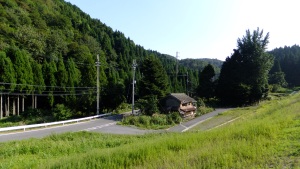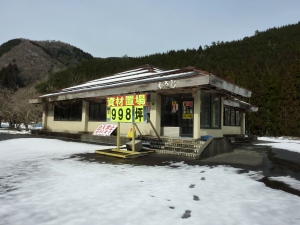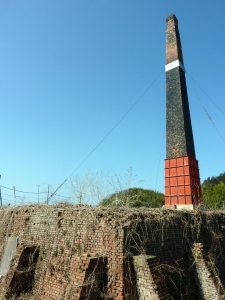Haikyo – Route 303 (Part 3 – The Lonely House)
 So this is the third and final part of the 303 trilogy that’s taken me over a year to blog – and which probably never would have been blogged if it hadn’t been for the continued hits and comments I keep getting. So thanks for that!
So this is the third and final part of the 303 trilogy that’s taken me over a year to blog – and which probably never would have been blogged if it hadn’t been for the continued hits and comments I keep getting. So thanks for that!
Anyway, this final part is, as the title says, one lonely house I spotted besides a branch off from 303.
Haikyo – Route 303 (Part 1 – Roadside Ruins)
 This will be the first of three (long overdue) haikyo updates about places I’ve come across whilst exploring my local stretch Route 303. Since about February I’ve been making irregular trip along this route, and checking out some of the branches running off it which has turned up quite a lot of haikyo goodness.
This will be the first of three (long overdue) haikyo updates about places I’ve come across whilst exploring my local stretch Route 303. Since about February I’ve been making irregular trip along this route, and checking out some of the branches running off it which has turned up quite a lot of haikyo goodness.
The first place that caught my eye and got me out there, was this road side diner – which I have to admit turned out to be a pretty dull shell of a building, but it did at least get me out and exploring the area.
Haikyo – Brick Kiln
 Over the last couple of months Andrew and I have been slowly checking off all the sites in the book around Shiga Ken. Today we’re checking out #128 (p.185) and, as usual, without the benefit of any translation we have no idea what to expect, all we know is that it’s somewhere not far from the centre of Omi Hachiman.
Over the last couple of months Andrew and I have been slowly checking off all the sites in the book around Shiga Ken. Today we’re checking out #128 (p.185) and, as usual, without the benefit of any translation we have no idea what to expect, all we know is that it’s somewhere not far from the centre of Omi Hachiman.
As we draw close to the area that we figure it has to be in a huge black brick chimney slides into view above the other buildings. Brick isn’t a typical material in Japan (its dead weight isn’t something you want falling on you during an earthquake) and seeing brick usually suggests a historical or foreign (influenced) building – often both. Guessing that this must be what we’re here to see we park up and make our way across a rather industrial looking bridge and weir combo so see exactly what it is we’ve found.
The Yokai Files – Tengu
The mass of history and mythology surrounding the figure of the Tengu makes it almost impossible to give a brief review of them. Through the ages even the way these creatures are perceived has changed a lot, originally portrayed as bad omens and demonic war bringers they have now become revered as a kind of demigod of the mountains.
As such the modern Tengu blurs the line between folk legend and religion – yokai or deity? It isn’t always so clear-cut.
In both traditions the basic image of the Tengu is essentially the same. They are winged humanoids with bright red skin and long noses, which has earned them the name ‘Hanadaka Tengu’ (Long Nosed Tengu).
Haikyo – Animal Pens
 A really brief haikyo update today.
A really brief haikyo update today.
Just three collages from photos taken at some old animal pens I found while out cycling.
There’s not much to be seen there now, exactly what kind of animals were kept here, or if there used to be some bigger structure here, isn’t really clear.
Later on in the same day I found a far more impressive place, a house, which will the subject of my next (much bigger) haikyo report.
Haikyo – Biwako Tower Revisited
 Biwako Tower was one of the first haikyo I visited in Japan and I probably wouldn’t have returned if Florian hadn’t wanted to go and take some photos after we left the nearby love hotel haikyo.
Biwako Tower was one of the first haikyo I visited in Japan and I probably wouldn’t have returned if Florian hadn’t wanted to go and take some photos after we left the nearby love hotel haikyo.
Yet I’m glad I did as this extended return visit turned up quite a lot more information about the history of the place as well revealing several things I missed on my first (brief) visit.
I also got a perfect answer to the question I was left with after my last visit – Why did they call a huge ferris wheel ‘Biwako Tower’ ? (more…)
Haikyo – Starting Small
A couple of people have recently asked me how I first got into haikyo, and the truth is I’m not sure.
Haikyo – The Basics
What does Haikyo mean?
Haikyou is a cover-all term used to describe any abandoned place. From recently bankrupt hotels to decaying ruins; like this one on the banks of Lake Biwa. Japan has a wealth of these places, being a post economic boom society with a declining population, they stand as evidence of Japan’s more prosperous and populous past. Domestic, leisure and industrial ghosts that haunt the villages and cities of Japan. (more…)




